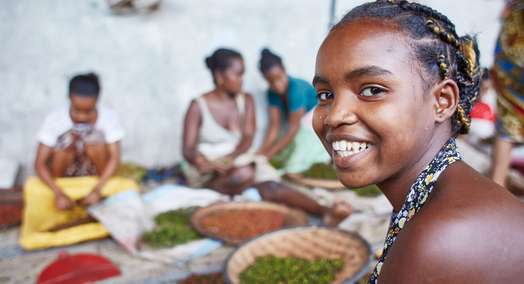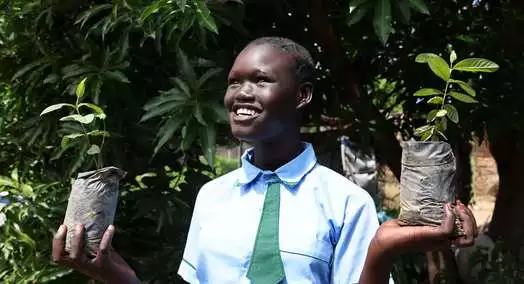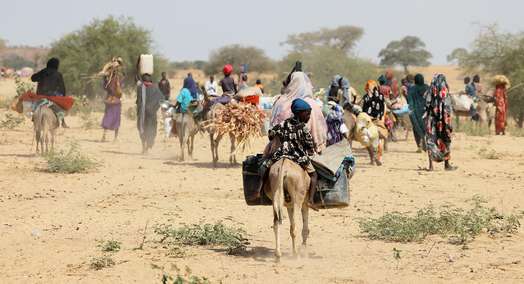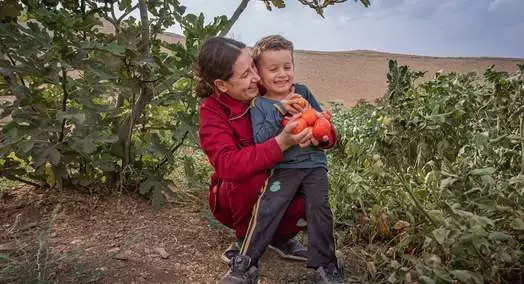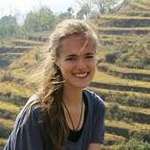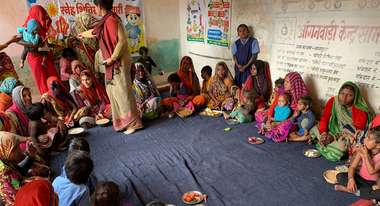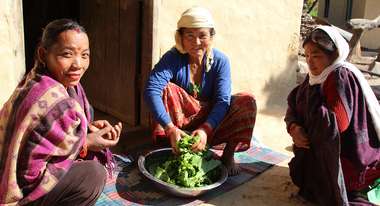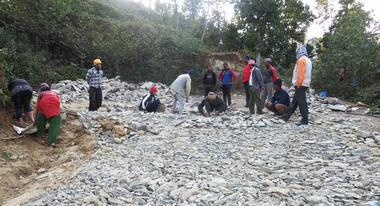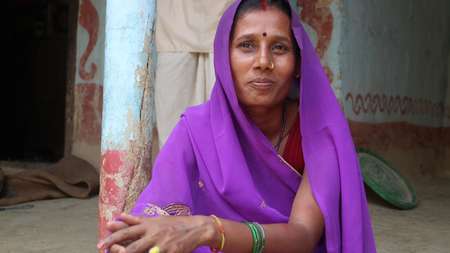
Smallholder Rekha defies the Monsoon
In August 2017, Rekha Devi Sharam was left with nothing. Heavy floods had hit the Terai area in Nepal. The 32-year-old woman from Malhaniya, Siraha district, and her family lost almost all their belongings. Their fields were destroyed.
Every year, people in the Terai live in fear of new floods and landslides. Between June and September, the monsoon threatens the communities and exacerbates the already existing problems. But with clever measures Rekha and the people in the region can protect themselves against the worst consequences of the extreme weather.
Smallholders in Nepal in Need of Disaster Reduction
Siraha is one of the poorest districts in Nepal. Due to a lack of education, most people in the communities don't have the skills and knowledge to sustainably protect themselves from natural disasters. Only 53 percent of people in Siraha can read and write. For many, access to resources and education is also culturally obstructed. The society in Terai is characterised by complex social and cultural practices – the social standing is still based on gender and caste.
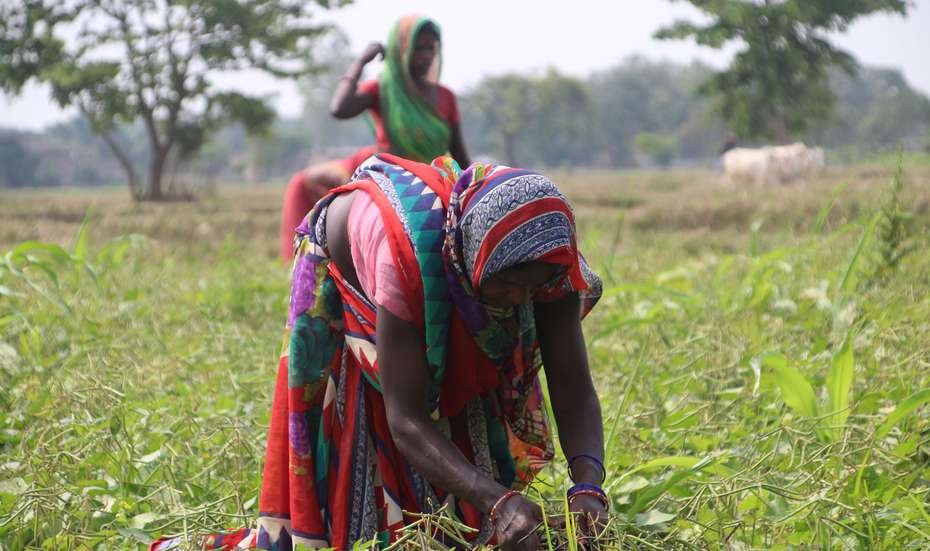
Disaster risk management structures and early warning systems have only limited effects in Siraha. Even though flooding in the Terai occurs annually, the villagers have not been able to adopt any mitigation measures such as the construction of flood-resistant buildings or the use of tarpaulins to protect plants. Rekha Devi Sharma, too, doesn't have the money and knowledge to protect herself from the extremes of nature. She has four young children. Her husband is working in Qatar as a carpenter, earning 15,000 Nepali Rupees per month, approximately 150 US-Dollars. The shared money is hardly enough to feed her children and herself and to farm the fields.
The Flood Disaster's Fatal Consequences
When the dam near the Kamala river broke due to heavy rainfall in August 2017, the water reached the villagers up to their knees. Water level started going down after a few hours, but the residents were too afraid to leave their homes. All crops were heavily destroyed. Rekha and her children hardly had anything to eat for two days.
For many weeks, Rekha was not able to grow anything on her land – and even ten months after the disaster, the production is still very low. The mother of four has to regularly borrow money in order to be able to continue working as a farmer. Only a quarter of the available land in the village of Malhaniya is now being used for agricultural activities.
Self-made Fertiliser Boosts Biodiversity
An agricultural training session in Chitwan gave Rekha and other farmers hope. In these trainings, provided by Welthungerhilfe's local partner organisation Aasaman Nepal, Rekha has learned about the production of her own organic fertiliser as well as insect repellent made of milk, butter, cow dung, cow urine and black pepper. She and the other participants were also made familiar with the green house concept and the importance of using plastic for covering the plants from the monsoon rain. Rekha only used to cultivate rice, wheat and pulses. Now she plans to grow pumpkin, spinach, bitter guard as well as coriander in her kitchen garden that she has already started working on with her newly gained knowledge.
For a better preparation for future floods, ten Community Disaster Management Committees have been formed all over Siraha District. They will meet monthly to discuss topics like the establishment of an emergency fund for rescue materials and food as well as the insurance coverage for any animals and crops – if crops will get destroyed in future floods, the villagers will have the right to 90 per cent compensation.
Support For Marginalised Groups
The project in Siraha is the first conducted by Welthungerhilfe Nepal in the Terai region. It has been designed to build the capacities of flood affected vulnerable communities to respond, adjust and prepare for flood disasters, therefore mitigating the impact of the yearly monsoon rains and strengthening the villagers’ resilience. The project is dedicated to 5,000 households covering 27,600 people, including marginalised groups such as Dalits, Musahar as well as Muslim communities.
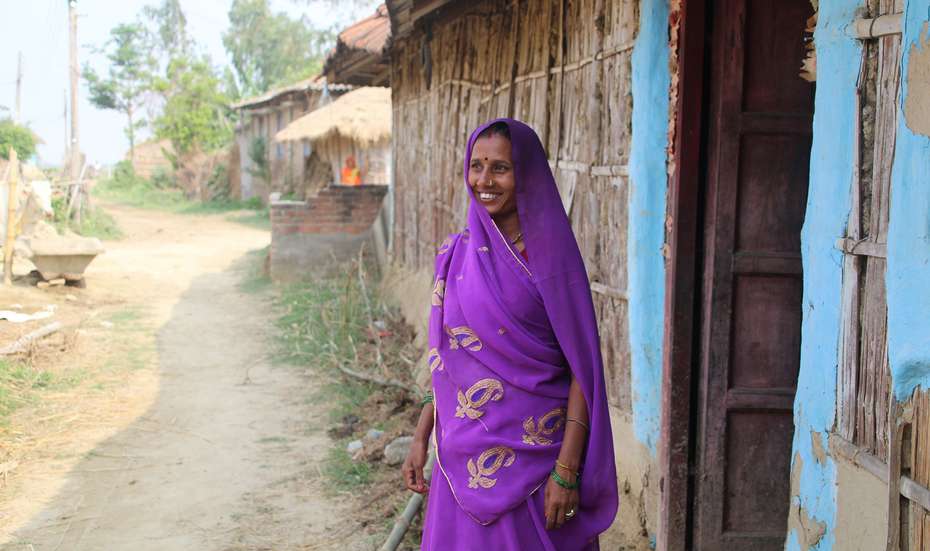
How Welthungerhilfe Is Helping Flood Vulnerable Communities In Nepal:
The Welthungerhilfe project in Nepal ("Trans-boundary flood resilience project in Kamala river basin") supports people in flood-hit border areas on the Kamala River in Nepal and India, including the Terai area in Nepal's Siraha district. The measures of the project include:
- Implementing Community Disaster Management Committees (CDMCs) competent to support communities, so that they can react better during a flood (including construction of dams, fortifications of houses for protection against floods);
- Supporting flood vulnerable communities and households with efficient community-based trans-boundary early warning systems and small-scale mitigation facilities;
- Training vulnerable households in nutrition, diversified diets and home gardening;
- Giving flood vulnerable households access to financial services and insurance schemes;
- Implementing trans-boundary citizen forums with competencies to advocate for improved trans-boundary early warning systems.
